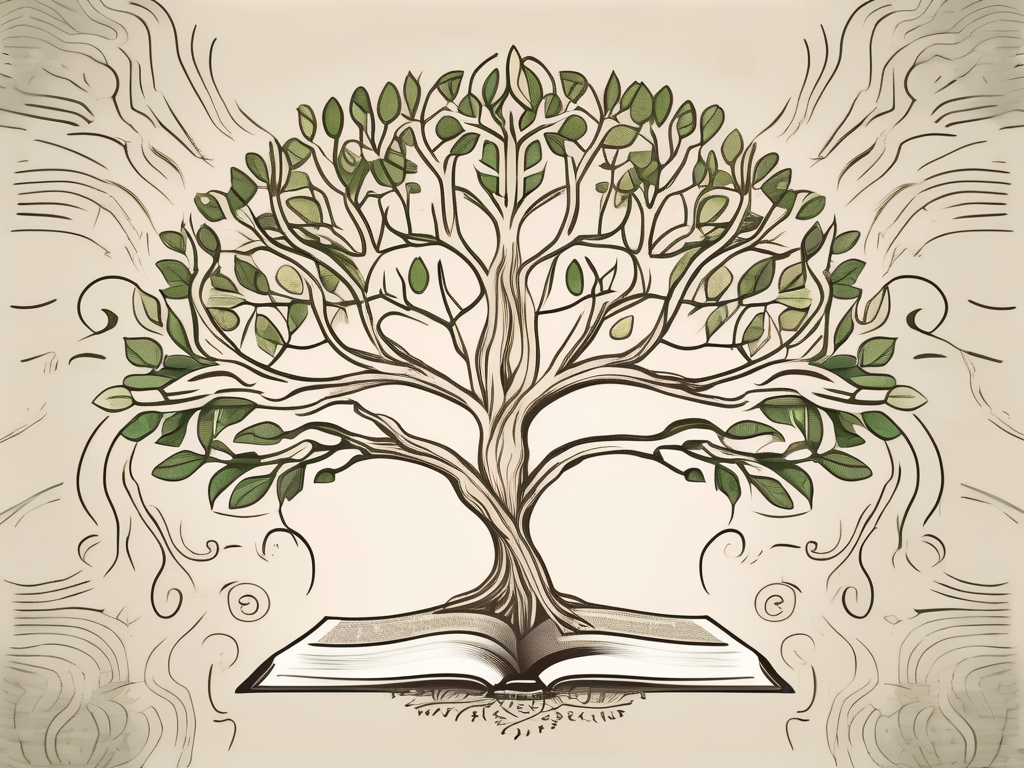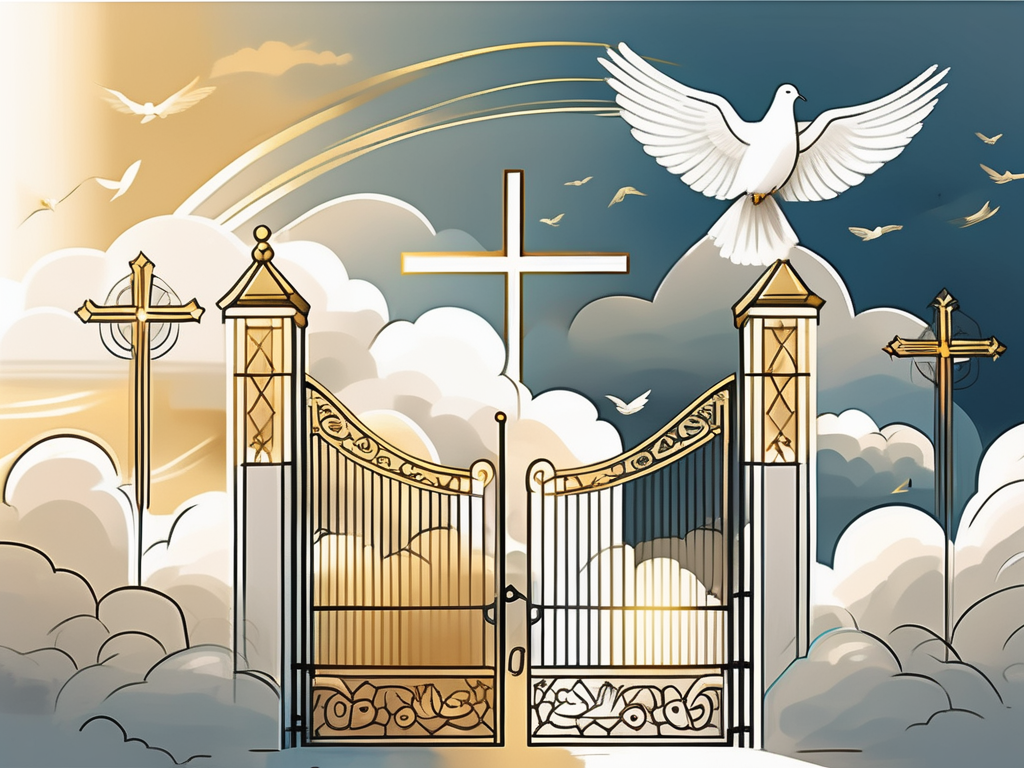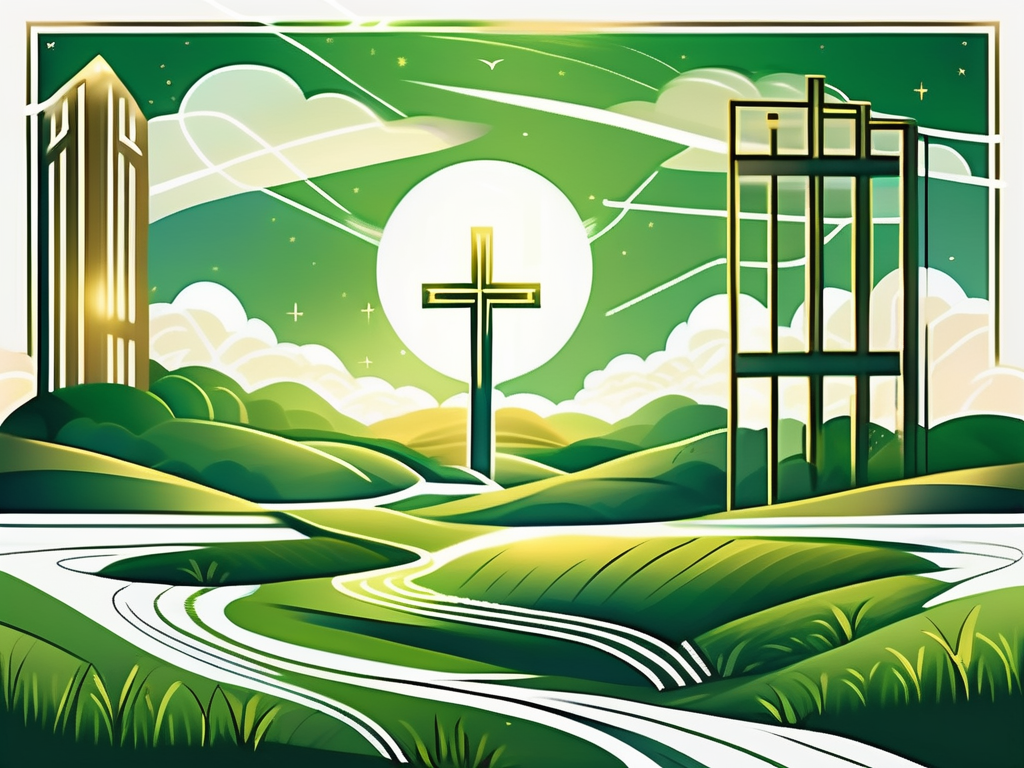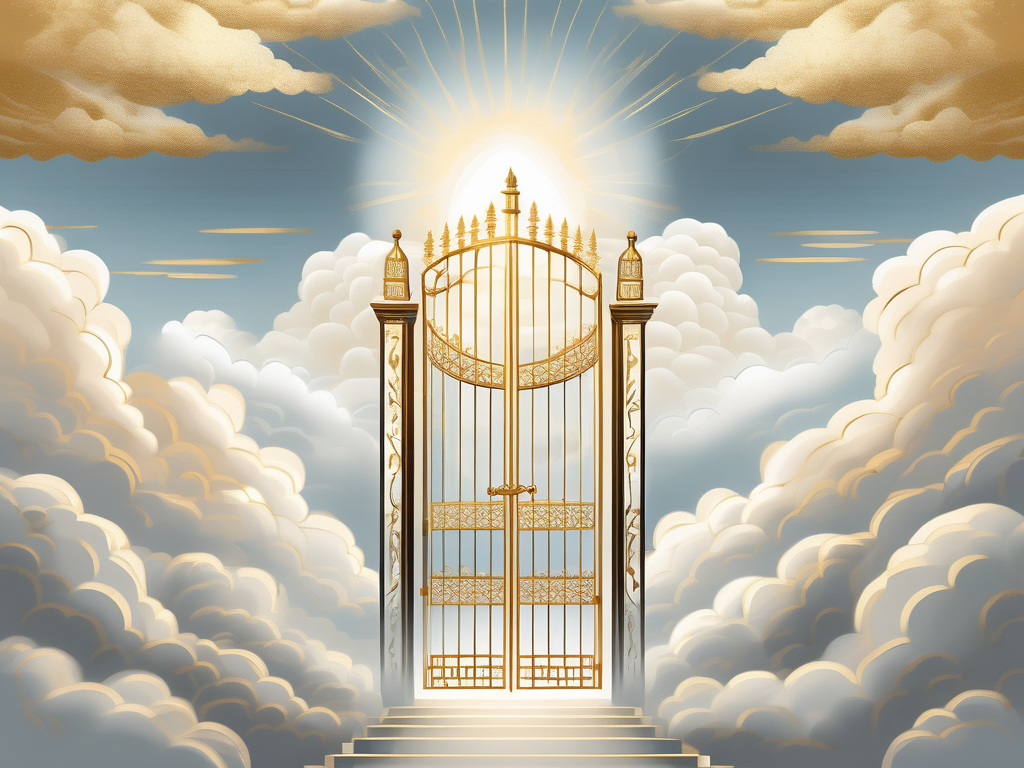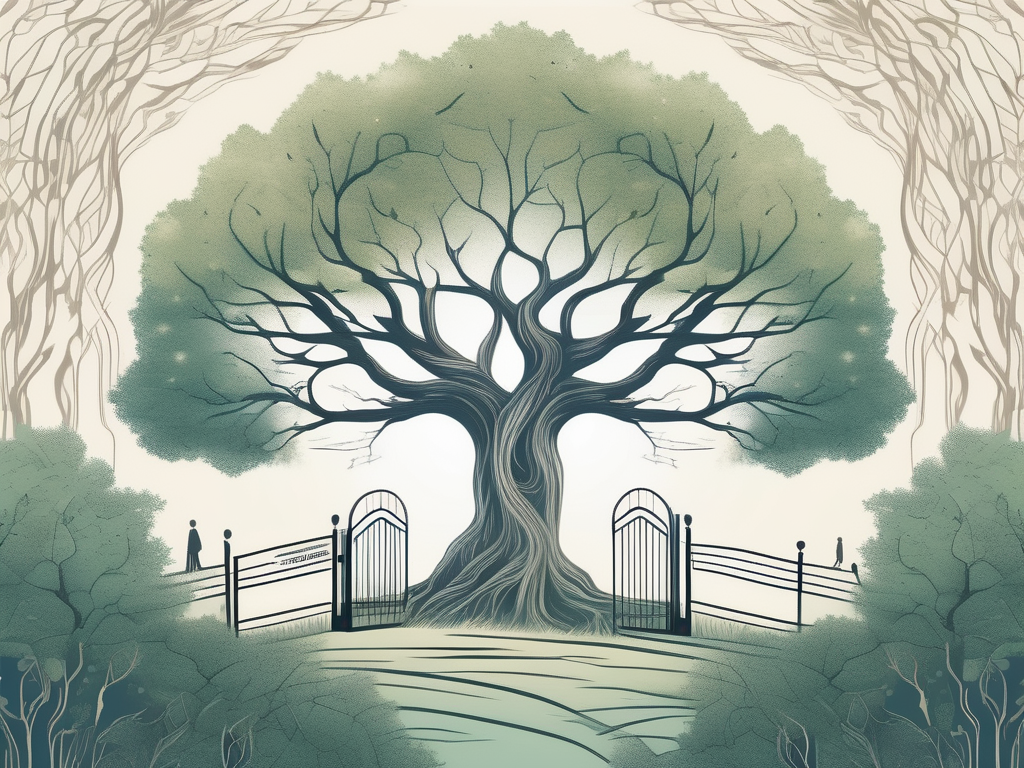In Christian symbolism, the Tree of Life has deep spiritual significance. It represents various aspects of faith, illustrating important biblical themes and concepts. Let us explore the symbolism of the Tree of Life and its meaning in Christian theology.
Understanding the Symbolism of the Tree of Life
The Tree of Life holds a prominent place in both the Old and New Testaments. It serves as a powerful symbol and a connection between heaven and earth. This ancient symbol is rich in meaning and has inspired countless interpretations throughout history.
One interpretation of the Tree of Life is that it represents the interconnectedness of all living beings. Just as the branches, leaves, and roots of a tree are all connected, so too are all living things connected in the intricate web of life. This symbolism reminds us of the importance of unity, compassion, and respect for all creatures.
Biblical References to the Tree of Life
The Tree of Life is mentioned multiple times in the Bible, symbolizing eternal life and spiritual nourishment. In Genesis, it is depicted in the Garden of Eden as a source of immortality, representing human longing for a restored relationship with God.
As Adam and Eve were banished from the Garden of Eden, they were denied access to the Tree of Life, highlighting the consequences of their disobedience. This story serves as a reminder of the fragility of human existence and the importance of seeking spiritual nourishment to sustain our souls.
In Proverbs, the Tree of Life is portrayed as a metaphor for wisdom. It offers guidance and leads to a fulfilling life rooted in righteousness. This imagery underscores the vital role of faith in shaping our choices and actions.
Just as a tree requires nourishment from the soil, sunlight, and water to grow, humans need wisdom and guidance to flourish in their spiritual journey. The Tree of Life serves as a reminder to seek wisdom and live a righteous life, bearing good fruit for the benefit of ourselves and others.
The Tree of Life in Christian Theology
The Tree of Life holds a significant place in Christian theology, representing the abundant blessings and everlasting life found in Jesus Christ. Through His sacrifice on the cross, believers are offered the gift of eternal life, symbolized by the Tree of Life.
Furthermore, the Tree of Life signifies the transformative power of spiritual growth. Just as a tree grows and flourishes, Christians are called to deepen their relationship with God, bear spiritual fruit, and impact the world around them.
When Christians embrace the teachings of Jesus and allow His love to flow through them, they become like the branches of the Tree of Life, extending God’s love, grace, and mercy to others. The Tree of Life serves as a reminder of the potential for growth and positive impact that lies within each individual.
Moreover, the Tree of Life also symbolizes the unity of believers in Christ. Just as the branches of a tree are connected to the same trunk, Christians are united in their faith and share a common purpose of spreading the message of love and salvation.
In conclusion, the Tree of Life is a powerful symbol that holds deep meaning in both biblical and theological contexts. It represents eternal life, spiritual nourishment, wisdom, growth, and unity. This ancient symbol continues to inspire and guide individuals on their spiritual journeys, reminding them of the interconnectedness of all living beings and the transformative power of faith.
The Tree of Life in the Old Testament
The Tree of Life holds a significant place in the Old Testament, symbolizing various aspects of humanity’s relationship with God. Its initial mention in the Book of Genesis portrays a perfect connection between humanity and the divine. It represents a state of bliss and communion that was lost due to disobedience.
As the story goes, Adam and Eve were banished from the Garden of Eden, where the Tree of Life resided. However, the longing for this tree remained, serving as a constant reminder of the need for redemption and restoration of the intimate connection with God.
Throughout the Old Testament, the Tree of Life takes on metaphorical meanings, offering valuable insights into the pursuit of wisdom and righteousness.
The Tree of Life in the Garden of Eden
In the Garden of Eden, the Tree of Life stood as a tangible representation of the perfect relationship between humanity and God. Its presence symbolized the harmonious state in which Adam and Eve lived, enjoying the fullness of life in God’s presence.
However, the story takes a tragic turn when Adam and Eve disobey God’s command and eat from the Tree of the Knowledge of Good and Evil. As a consequence, they are banished from the Garden, losing access to the Tree of Life and severing their direct connection with God.
Despite their expulsion, the significance of the Tree of Life remains. It becomes a beacon of hope, pointing humankind towards the possibility of redemption and restoration of their intimate relationship with God.
Proverbs and the Tree of Life
In the book of Proverbs, the Tree of Life takes on a metaphorical meaning, emphasizing the importance of seeking wisdom and righteousness. Just as the Tree of Life sustains and nourishes, wisdom and righteousness bring vitality and fulfillment to our lives.
Proverbs 3:18 states, “She [wisdom] is a tree of life to those who embrace her; those who lay hold of her will be blessed.” This verse highlights the transformative power of wisdom, comparing it to the life-giving properties of the Tree of Life.
By embracing godly wisdom and living in righteousness, we align ourselves with God’s design and experience the fullness of life He intends for us. The Tree of Life serves as a reminder of the transformative potential that lies in seeking wisdom and living in alignment with God’s principles.
Throughout the Old Testament, the Tree of Life continues to inspire and guide humanity, symbolizing the longing for a restored relationship with God and the pursuit of wisdom and righteousness.
The Tree of Life in the New Testament
The concept of the Tree of Life holds great significance in the New Testament, symbolizing the eternal life and divine presence that believers can attain through their faith in Jesus Christ. The Tree of Life is mentioned in various passages, including the Book of Revelation, where it is described as a central element of the heavenly city.
The Tree of Life in the Book of Revelation
In the Book of Revelation, the Tree of Life reappears as a symbol of the new creation and eternal life. It is depicted as growing along the river in the heavenly city, bearing twelve kinds of fruit and providing healing leaves. This vivid portrayal paints a picture of a flourishing tree that represents the ultimate fulfillment of God’s plan.
As believers envision this magnificent tree, they are reminded of the glorious destiny that awaits them in God’s presence. The Tree of Life signifies a place where believers will dwell forever, experiencing continuous growth, abundance, and perfect wholeness.
Furthermore, the twelve kinds of fruit symbolize the fullness and completeness that will be found in the heavenly realm. Just as the tree bears a variety of fruit, believers will experience the richness and diversity of God’s blessings in their eternal existence.
The healing leaves of the Tree of Life serve as a powerful reminder of the restoration and renewal that will be available to all who partake in its divine nourishment. In the presence of God, every tear will be wiped away, and all pain and suffering will cease to exist.
Jesus Christ and the Tree of Life
Jesus Christ, the Son of God, serves as the embodiment of the Tree of Life in Christianity. Through His sacrificial death and glorious resurrection, He offers the gift of eternal life to all who put their faith in Him.
As believers are grafted into Christ, they derive nourishment from the roots of the Tree of Life. This spiritual nourishment enables them to grow in their relationship with God, bearing fruit that reflects the character of God Himself. Just as a tree draws sustenance from its roots, believers draw spiritual sustenance from their connection to Jesus Christ.
Through this connection, believers experience spiritual growth, transformation, and the ability to bear fruit that glorifies God. The fruit they bear includes love, joy, peace, patience, kindness, goodness, faithfulness, gentleness, and self-control.
As believers abide in Christ, they find themselves firmly rooted in the life-giving presence of the Tree of Life. They are sustained by His grace and empowered by His Spirit to live a life that is pleasing to God.
Ultimately, the Tree of Life in the New Testament serves as a powerful symbol of hope, assurance, and the promise of eternal life. It reminds believers of the abundant blessings and perfect communion they will experience in the presence of God for all eternity.
The Tree of Life in Christian Art and Literature
Depictions of the Tree of Life in Christian Art
Christian art has long embraced the symbolism of the Tree of Life, with various depictions found throughout history. Artists have visually captured its importance, often showing Jesus Christ as the central figure connected to the Tree, emphasizing the significance of His redemptive work.
These representations serve to inspire believers and remind them of the hope, abundance, and life found in Christ.
One notable example of a depiction of the Tree of Life in Christian art is found in the famous stained glass windows of Gothic cathedrals. These magnificent works of art showcase the Tree of Life as a central motif, surrounded by intricate designs and vibrant colors. The branches of the tree reach towards the heavens, symbolizing the connection between God and humanity.
Another common representation of the Tree of Life in Christian art is through illuminated manuscripts. These meticulously crafted books feature intricate illustrations, often depicting scenes from the Bible. The Tree of Life is frequently included, serving as a visual reminder of God’s eternal presence and the promise of everlasting life.
Throughout the centuries, artists have explored different styles and techniques to portray the Tree of Life. Some choose to depict it as a majestic oak tree, with strong and sturdy branches representing the stability and strength found in Christ. Others opt for a more delicate and ethereal depiction, using flowing lines and soft colors to convey the beauty and grace of God’s creation.
The Tree of Life in Christian Literature and Poetry
Christian literature and poetry have beautifully incorporated the imagery of the Tree of Life. Poets and writers have used this symbol to convey the journey of faith, the pursuit of wisdom, and the transformative power of God’s grace.
Whether metaphorically linking the Tree to the pursuit of truth or symbolically exploring the connection between heaven and earth, these works provide inspiration and encouragement for believers on their spiritual path.
In John Milton’s epic poem “Paradise Lost,” the Tree of Life plays a significant role. It represents the divine source of immortality and the ultimate goal of humanity’s redemption. As the poem unfolds, Milton explores the consequences of Adam and Eve’s disobedience and their subsequent loss of access to the Tree of Life, highlighting the importance of obedience and the consequences of sin.
Another notable literary work that incorporates the Tree of Life is C.S. Lewis’ “The Chronicles of Narnia.” In the book “The Magician’s Nephew,” Lewis introduces the magical land of Narnia and its creation story. The Tree of Life, known as the “Tree of Protection,” is a central element in the narrative, representing the source of life and the barrier between Narnia and the evil forces that seek to destroy it.
Christian poets, such as George Herbert and Gerard Manley Hopkins, have also utilized the imagery of the Tree of Life in their works. Herbert’s poem “The Flower” compares the Tree of Life to a flower, highlighting its beauty and the life-giving qualities it possesses. Hopkins, in his poem “Pied Beauty,” celebrates the diversity and abundance of God’s creation, using the Tree of Life as a symbol of the interconnectedness of all living things.
Through art and literature, the Tree of Life continues to captivate and inspire believers, reminding them of the profound truths and promises found in their faith. Its symbolism serves as a powerful reminder of the hope, abundance, and eternal life that can be found in Christ.
The Tree of Life as a Symbol of Christian Beliefs
The Tree of Life and the Concept of Eternal Life
The Tree of Life represents the Christian belief in eternal life through Jesus Christ. Just as a tree brings forth new life each season, so believers in Christ have the assurance of everlasting life, rooted in their relationship with Him.
This powerful symbol reminds Christians of the hope and promise of eternal communion with God, prompting them to seek a life that bears witness to this truth.
The Tree of Life and the Idea of Spiritual Growth
The Tree of Life also represents the ongoing process of spiritual growth and transformation. Just as a tree grows and matures, believers are called to deepen their relationship with God, allowing His Spirit to bring forth spiritual fruit in their lives.
Through prayer, study of Scripture, and active participation in the Christian community, individuals strive to become more Christ-like, bearing the image of the Tree of Life for the world to see.
In conclusion, the Christian Meaning of the Tree of Life encompasses various dimensions of faith and symbolizes essential aspects of Christian belief. From the profound biblical references to its significance in Christian art and literature, the Tree of Life serves as a powerful reminder of God’s plan for humanity, the gift of eternal life in Jesus Christ, and the transformative power of spiritual growth. May the symbolism of the Tree of Life inspire believers to seek a deeper connection with God and embody His love and grace in the world.
